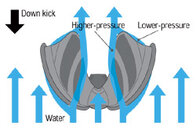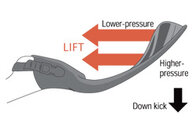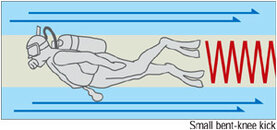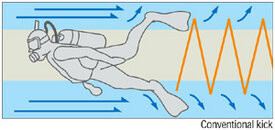Temple of Doom:
A note about energy: Different fins aren't going to change the energy output of your body. You're going to put out the same energy whether you're wearing splits or paddles. It's the efficiency of the fins turning your body's energy into thrust that translates into faster or slower fins. If the same diver under the same conditions can swim 65 feet faster in splits than paddles, it's because the splits are more efficient at translating that divers energy into thrust.
Sorry, this is just plain inaccurate about energy expended.
The work performed is force x distance. So, when I move my leg, the work performed is the force I am pushing with multiplied by the distance I am moving it.
When I use paddle fins, I feel them 'bite' against the water. There is more force.
When I tried split fins, it felt like I had no fins at all. They didn't 'bite' the water. My leg moved the same distance, but there was less force.
Thus there was more energy expended using the paddle fin. W = F x d.
So a kick with the paddle fin requires more work. Your body is expending more energy.







